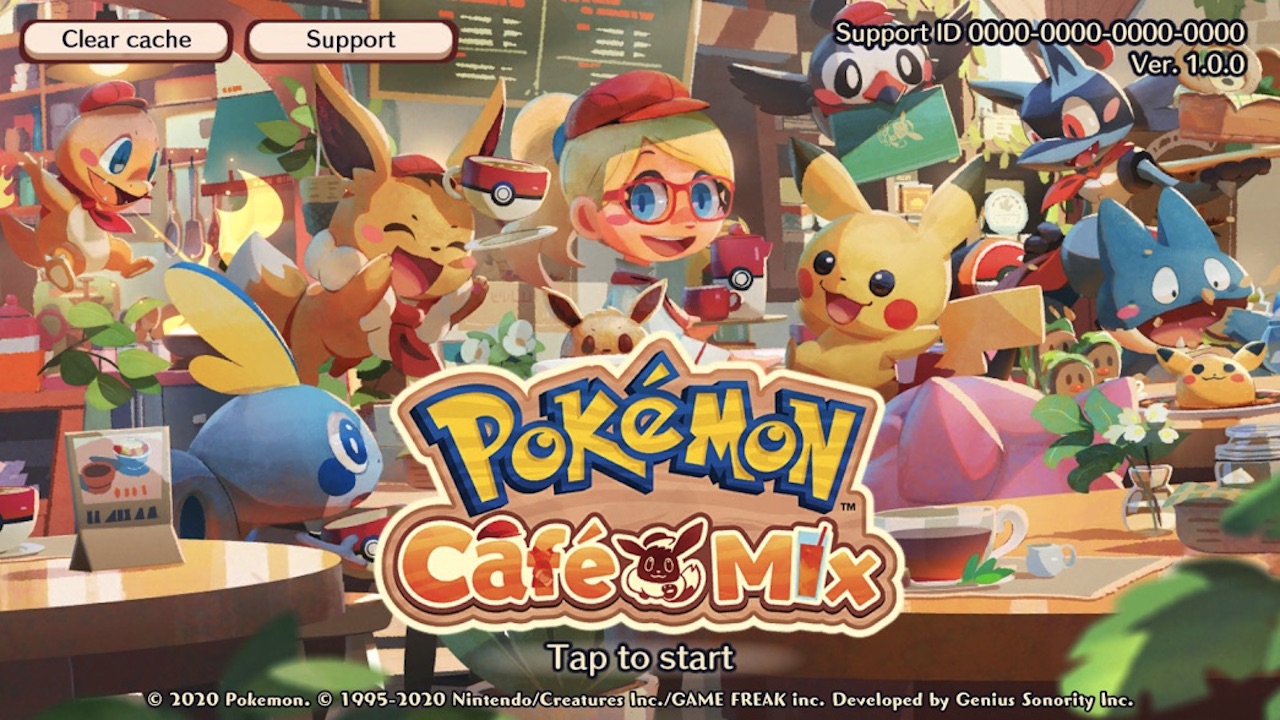

The next youngest? Star Fox, which came out in 1993. note In fact Pokémon was the youngest Nintendo franchise represented in the Nintendo 64 installment. It was even amongst the first of Nintendo's stable of games to be represented in the original Super Smash Bros., where not only are Pokémon like Pikachu playable fighters, but a larger selection are summonable during battle.
#Pokemon smile srebii series
And that's just as a game franchise as stated above, as a wider media franchise it is literally the most profitable thing ever, having expanded early on with a Collectible Card Game, various manga, and an on-going anime series that is just as notable as the games. Despite being a relatively young series, the franchise is the second-best-selling video game franchise of all time, by a wide margin, note Pokémon is a whopping seventy million copies ahead of number three, the Wii series ( Wii Sports, Wii Sports Resort, Wii Play, Wii Fit, Wii Music, Wii Party), also published by Nintendo! and is only beaten by its older brother, the Mario franchise. Part of its success is down to the fact that with each generation, you must have access to (through purchase or a friend) at least two games to complete your Pokédex, trading with another player, and you both need Game Boys and alternate copies of the game. To say that the brand took off like a (Team) rocket would be an understatement. That is the rationale behind releasing different versions of the game, as each version has certain Pokémon that were exclusive to it, and trading is the only way to get those exclusives in the other version. To further facilitate interaction between players, Pokémon can also be traded between games, and certain Pokémon can only be obtained by trading. As such, players can continue to train and catch Pokémon in order to have the best team among their peers.

Not only are the player's Pokémon usable against the in-game opponents, these same Pokémon can be pitted against Pokémon trained by other live players of the game. The rest of the game (or as some insist, the only point of the game) is the one-on-one Competitive Multiplayer. This is because the completion of the in-game storyline, Bonus Dungeons and filling out the game's Pokédex only comprise part of the gameplay. While these aren't necessarily the greatest stories ever told, the games are certainly enjoyable, especially if you have friends that also play the games. During your journey, you also manage to single-handedly take down some kind of crime syndicate (and/or save the world) at some point along the way, and capture really powerful Pokémon that the local legends are based on. The plot of each main-series game is typically a quest To Be a Master the player is given one Pokémon to start their team with, then proceeds to take on the region's "Pokémon League" by catching new Pokémon, defeating other Pokémon trainers in battles (most importantly your childhood friend and rival), challenging type-specialist Gym Leaders and collecting Gym Badges, and ultimately battling the Elite Four to become the regional League Champion. Other mechanics introduced in later generations, such as items that Pokémon can hold and abilities they can possess are also limited but serve to increase depth in strategy. Other restrictions placed on the player are the number of Pokémon one can have on a given team, which is no more than six at a time. This was hampered in the first generation by balance issues leading to some elements and species becoming obvious Game-Breakers, but later generations have made many strides in balancing them out, most notably with the addition of new types: Dark, Steel and Fairy. The second factor is the strict move limit: each of your Pokémon can only know four moves at once, out of a large movepool that they can learn from. The original idea was for an artificial form of insect collecting for kids that lived in cities and thus couldn't participate in such a hobby (as the original creator was a bug collector when he was a kid), with the paired versions providing incentive for players to get together and trade Mons with their friends (but more on that later). The idea of the game is to run around and battle wild Mons with your own, catch them with hand-held balls, and teach them to battle ( non-lethally) with each other under the guidance of human Trainers for fun and profit. Released in Japan in February of 1996 for the Game Boy, Pokémon (or in Japan, Pocket Monsters) came in two versions: Red and Green. Pokémon went on to gross an estimated US$118.5 billion worldwide, becoming the highest-grossing entertainment media franchise of all time. Pokémon is a long-running series of Japanese Role Playing Games, developed by Game Freak and published by video game giant Nintendo, which spawned a multi-billion dollar franchise, and indirectly caused the proliferation of Western broadcasts of anime in the mid-to-late 1990s, along with Dragon Ball and Sailor Moon.


 0 kommentar(er)
0 kommentar(er)
